A common problem for landscape photographers is that skies can be massively brighter than the land beneath, particularly towards the start and end of the day. It’s a nightmare for cameras and photographers alike: with limited dynamic range to play with you can either expose for the sky and end up with a dark, murky landscape, or you can expose for the landscape and find that your beautiful bright sky has washed out to white. So what’s the solution?
One approach is to shoot two or more exposure-bracketed shots and merge them in an editing app. Some cameras have an HDR (High Dynamic Range) shooting mode that does this automatically, but usually only in JPEG quality mode, so you can’t fine-tune the results at the editing stage to the degree you can raw files.
Neutral density graduated filters
A more elegant solution is to use an ND grad (neutral density graduated) filter. These are typically rectangular in shape, with a clear half and a dark half, and a transition area in between. You’ll often get the choice of either a hard or a soft transition between the clear and dark halves: generally speaking, hard transitions are better for landscapes with relatively flat horizons, whereas soft transitions are better for scenes in which the horizon is broken up by hill, trees or buildings.
Most ND grads are designed to fit into a holder for accommodating ‘square’ filters. The holder then attaches to the front of your lens, via a screw-in adaptor ring. As the filter is rectangular rather than square you’re able to move it up and down within the holder, enabling you to position the vertical transition between clear and dark to suit the composition. There are a few circular ND grad filters on the market, which screw directly onto the lens’s filter attachment thread; they’re a poor substitute, though, as you’re stuck with the position of where the transition falls, which can become a limiting factor when composing shots.
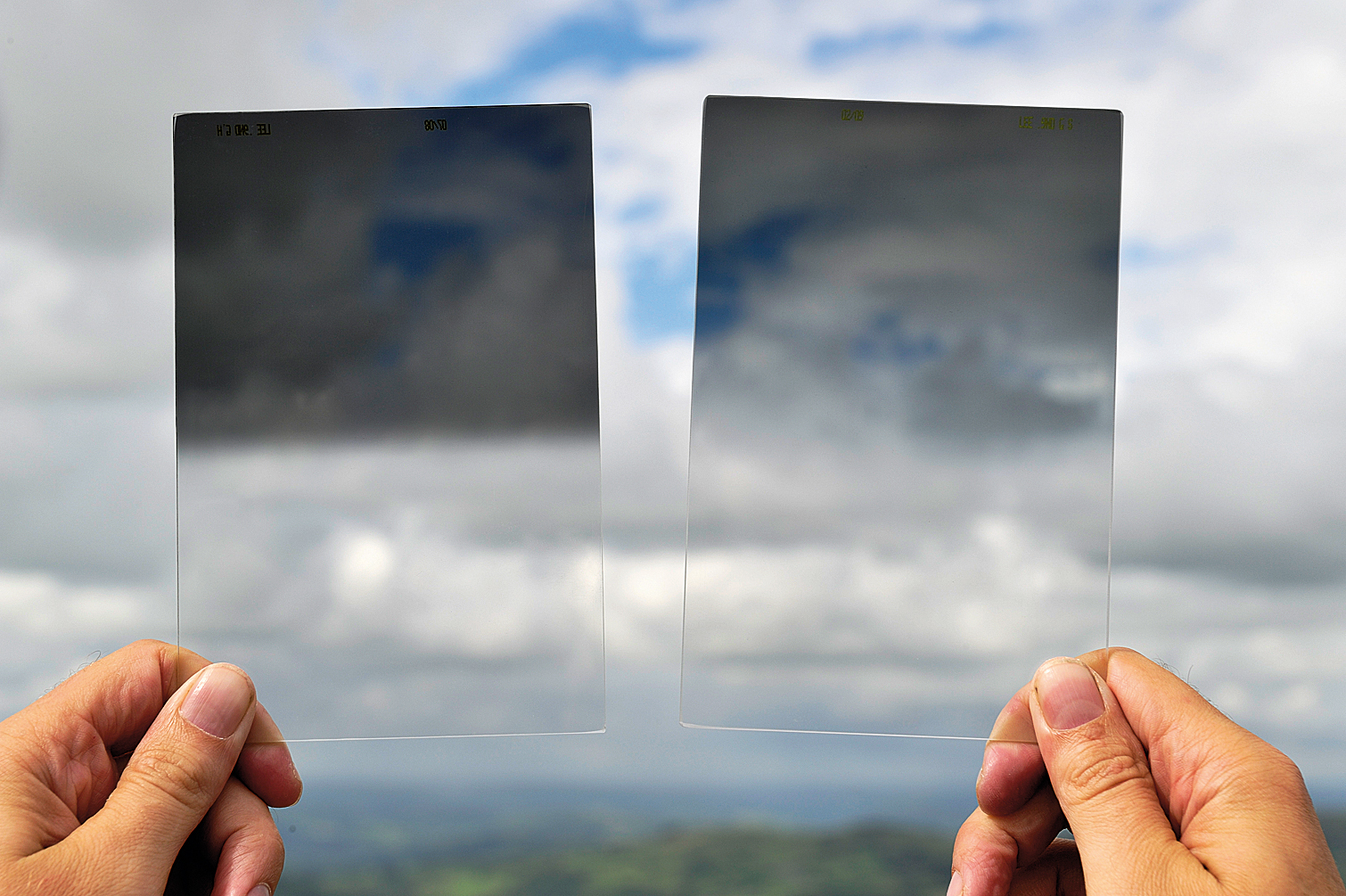
A hard ND grad on the left, and a soft ND grad on the right
What's the best ND grad size for your camera?
Square filter systems come in a variety of sizes. Given that there are rectangular as well as square filters, the fitment size is usually quoted as the width of the filter, the most popular options being 67mm, 85mm and 100mm. One of the oldest established players in the square filter game is Cokin. Its A series and P series filters are 85mm and 100mm respectively, and many other filter companies use this naming convention.
You can often get away with small 67mm filters for compact system cameras, but 85mm is a better fit for budget DSLRs with kit zoom lenses. If you have upmarket lenses with larger filter threads, or if you’re shooting with a wide-angle lens, you’ll need a minimum filter size of 100mm, while if you’re shooting with an ultra-wide-angle lens or a lens with a very large filter attachment thread, even 100mm filters may be too small, and you’ll have to go extra-large, with options at this end of the range including 130mm and 150mm widths.
A further complication is that some ultra-wide prime and zoom lenses have a built-in petal-shaped hood, and therefore no filter attachment thread. In this case you’re best off with the Lee Filters SW150 Mark II system, which includes specialist attachment hardware for a number of popular lenses.
Standard square filter kits
Getting back to basics, a standard square filter kit will suffice in most cases. This includes a filter holder made from either plastic or metal – plastic holders are sufficiently hard-wearing for most photographers, but pro-grade holders are usually made from aluminum. You’ll often be able to add extra sections for stacking two or more filters, for example doubling up on ND grad filters for strengthening the effect, or using an ND grad in combination with a circular polarizing filter. This is a popular option in landscape photography, when you want to darken the sky while also reducing reflections in water.
You can find yourself with a bit of a shopping list on your hands when you start out with an ND grad filter kit
As we’ve mentioned, you’ll also need an attachment ring, which screws into your lens’s filter attachment thread. Naturally, you’ll need multiple adaptor rings if you want to use your filters with a variety of lenses that have different filter threads. Other accessories often include a hood, which can minimize ghosting and flare. The design of hoods for square filter systems is often modular, enabling you to add extra sections for use with lenses that have longer focal lengths.
You can find yourself with a bit of a shopping list on your hands when you start out with an ND grad filter kit. It can include the filter holder, adaptor rings and a number of different strengths of ND grad. To keep things simple, some manufacturers offer complete kits, with ND grads of various strengths, and sometimes including the holder and an adaptor ring as well. Here are six of the most attractive filters and kits on the market.
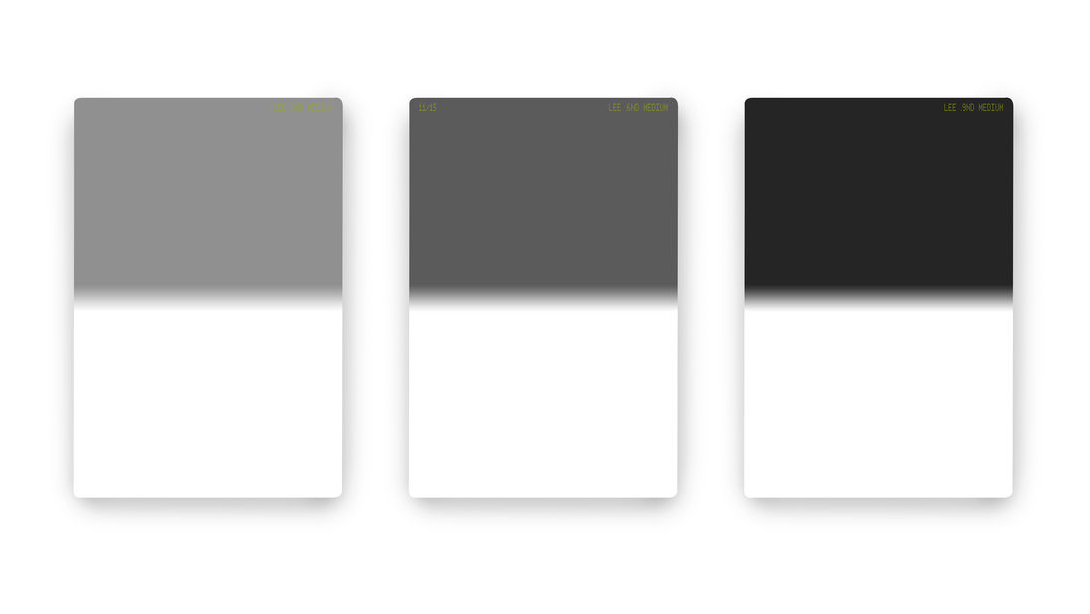
Like most competing companies, Lee Filters offers a range of ND grad kits, typically comprising three separate filters. However, this only skims the surface of a tremendously wide and deep range of handmade, top-quality resin-based filters in its lineup. Filters are available in half-stop increments from one-stop to four-stop ratings, each with the choice of soft, medium, hard and ‘very hard’ transitions. There’s also a wide range of sizes on offer, from the small Seven5 (75mm) series for compact system cameras, through a more standard 100mm range, and onto the SW150 Mark II (150mm) system, which comes with dedicated holders for popular ultra-wide lenses that have no filter attachment thread. Some of Lee’s holders and other hardware components are pricey, but everything is superbly well made.
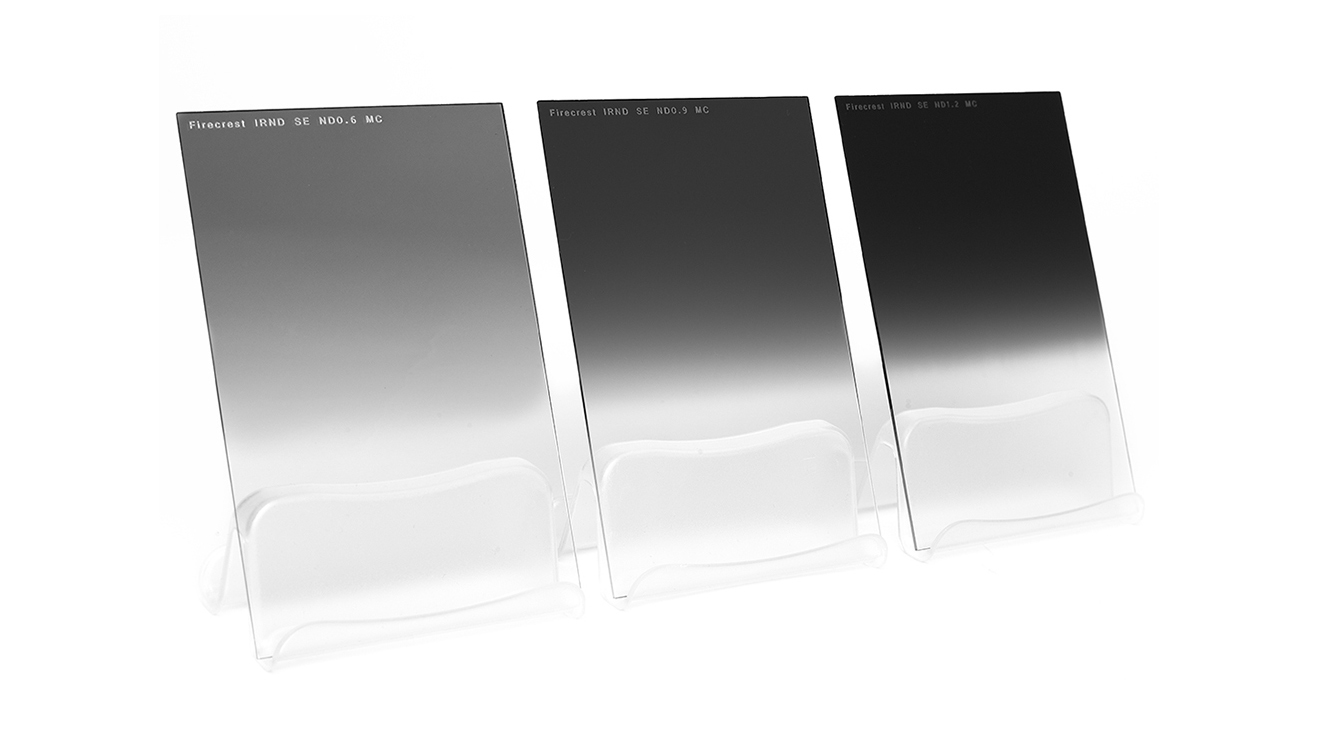
As with Formatt Hitech’s resin-based ND grad filter kits (see below), these premium kits include just the filters themselves, so you need to buy the hardware separately. However, Formatt Hitech does offer some particularly good hardware, including modular aluminum holders and an advanced Lucroit system. The filters are made from the highest quality Schott glass, with ‘rare earth metal’ coatings. The result is excellent neutrality, not just across the visible spectrum, but also into the ultra-violet and infrared ranges. The Soft Edge ND Grad kits are available with either three filters (2-4 stops) or four filters (1-4 stops), and in sizes of 67 x 85mm, 85 x 110mm, 100 x 150mm, 150 x 170mm and 165 x 185mm. Only soft-transition Firecrest ND grads are available, apart from the specialist Firecrest Ultra Reverse ND Grad – this is designed for shooting at sunrise and sunset, when the greatest brightness is around the horizon line.
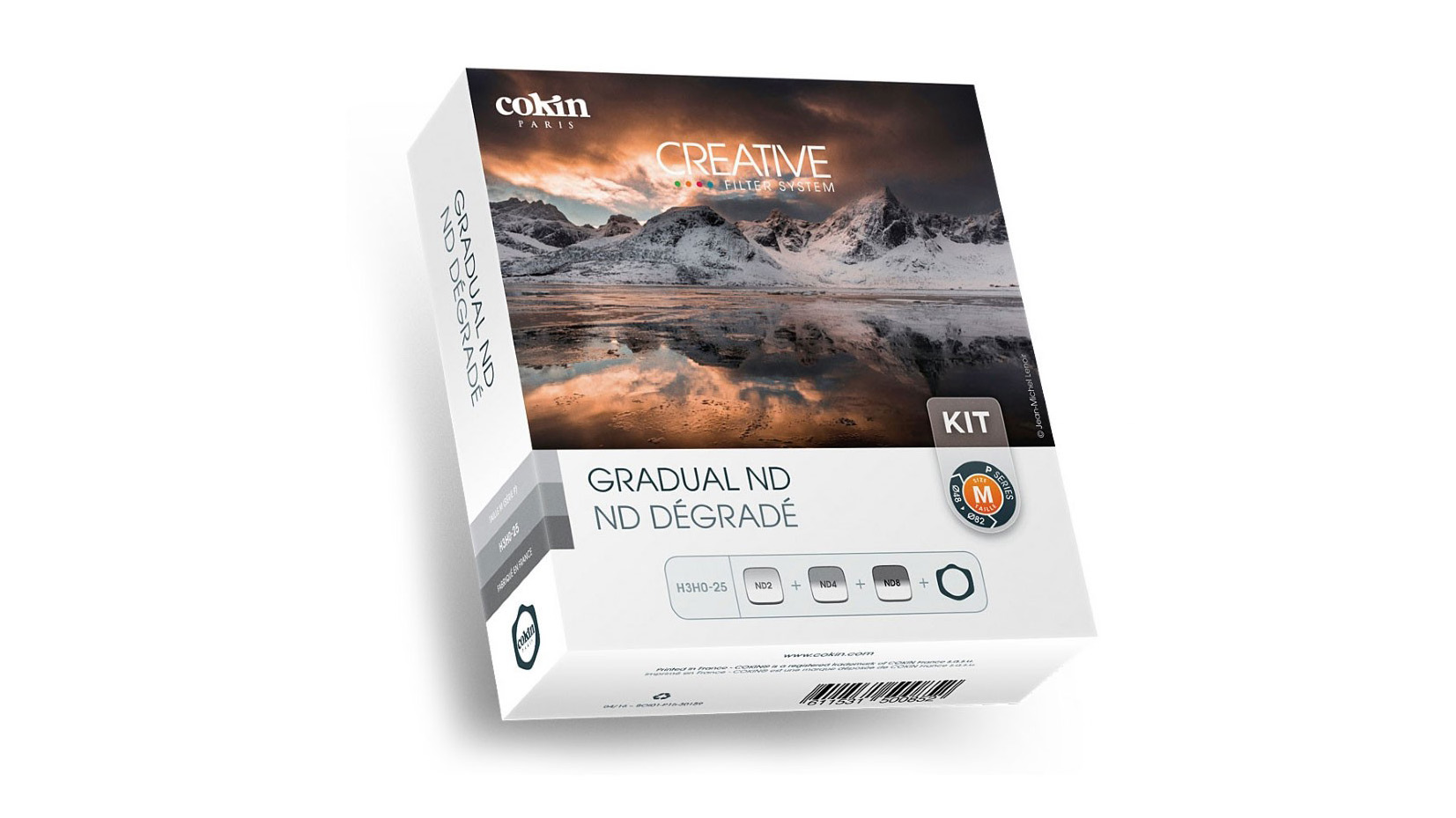
Cokin’s latest ND grad offering is available as a basic three-filter kit, or as a Plus kit that adds a plastic holder at little extra expense. The three filters comprise one-stop and two-stop ND grads with hard transitions, and a three-stop ND grad with a soft transition. The combination enables good versatility, with the option of stacking filters for stronger effects. The plastic filters are relatively inexpensive, yet offer good neutrality to avoid unwanted color shifts. The kits are available in P, Z-Pro and X-Pro sizes, with physical widths of 84mm, 100mm and 130mm respectively.

Formatt Hitech offers a wide range of ND grad kits based on high-quality resin filters, as well as the more premium filters featured above. Each kit contains three filters, with one-stop, two-stop and three-stop ratings. You can choose whether to go for hard or soft transitions for the filters, and additional filters are also available individually. There’s a particularly wide range of sizes on offer, including 67 x 85mm, 85 x 110mm, 100 x 125mm, 100 x 150mm and 150 x 170mm. The 100 x 150mm option is extra-tall, enabling greater versatility for positioning the transition within a composition. Formatt Hitech matches its filters with a wide range of similarly high-quality holders and other hardware.
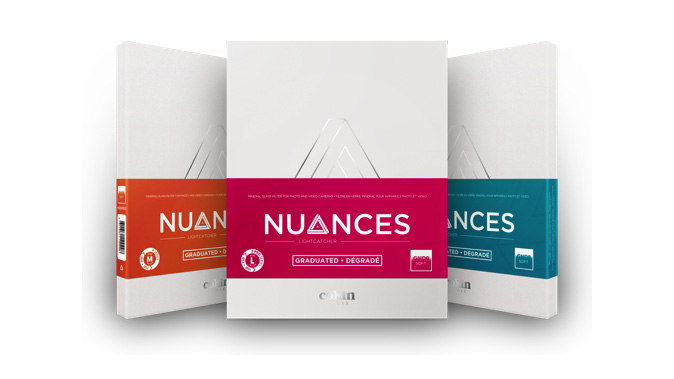
A sizable step up the quality ladder from Cokin’s plastic filters, the Nuances GND (Gradual Neutral Density) range is made from tempered Schott glass with nano metallic alloy coatings. Color neutrality is particularly good, even when stacking multiple filters. Filters are sold individually and not as a kit, and individual filters are only available with soft transitions. P series (84mm) filters include one-stop, two-stop and three-stop options. The Z-Pro (100mm) size adds a four-stop option to the range, and the largest X-Pro (130mm) size is available in two-stop, three-stop and four-stop options. They’re much more expensive to buy than Cokin’s basic, plastic filters, especially in larger sizes, and the overall jump in price is greater still if you add Cokin’s more upmarket Evo aluminum modular filter holder, available for P and Z-Pro filter sizes.
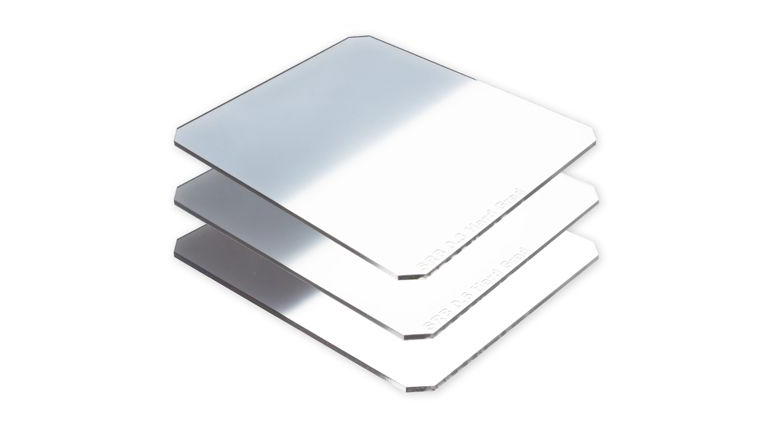
SRB offers cost-cutting, resin-based ND grad kits in both A (67mm) and P (85mm) sizes, each of which contains one-stop, two-stop and three-stop filters. Neutrality is impressive for such inexpensive kits, and a very reasonably priced four-stop ND grad is also available separately. Yet more buying choices include a ‘Starter Kit’ that includes a wide-angle or regular holder, adaptor ring and a single two-stop ND grad. Further up the price scale, ‘Elite’ modular holders are available. Typical of SRB Photographic’s product line, its filters deliver good performance and excellent value for money. The only real downside is that even the larger P-size filters won’t be large enough for photographers who use lenses with an attachment thread greater than 82mm, or wide-angle lenses with a focal length of less than 28mm (full-frame) or 18mm (APS-C).